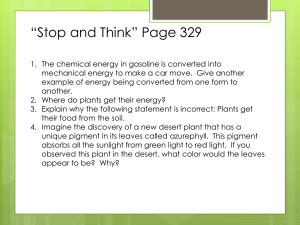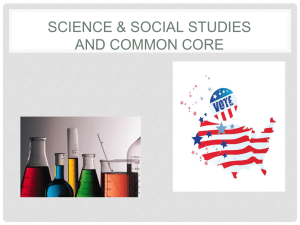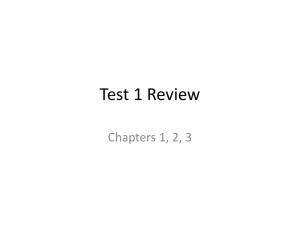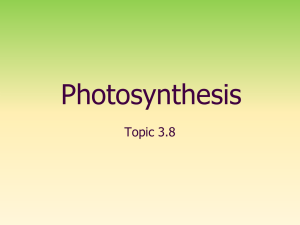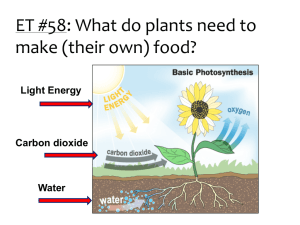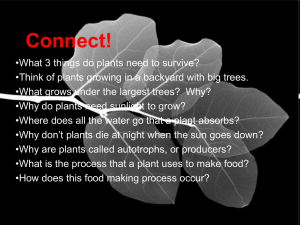SCI-Keys Biology-Module 1
advertisement
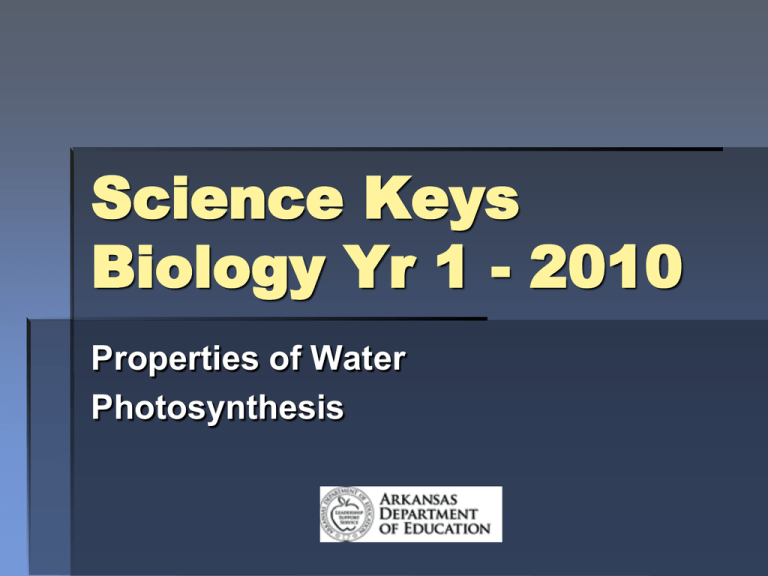
Science Keys Biology Yr 1 - 2010 Properties of Water Photosynthesis Overview Two Day Training 7E Learning Cycle Properties of Water Photosynthesis Norms Agenda Teacher’s Guide 2010 Science Keys Biology Yr 1 Properties of Water & Photosynthesis Arkansas Science Instructional Specialists 2010 Safety General Safety Information Material Safety Data Sheets (MSDS) www.MSDSonline.com Safety Equipment Goggles Lab Safety Lab Safety Rules Online Jim Kaufman Founder of the Laboratory Safety Institute Expert in lab safety Website: http://www.labsafetyinstitute.org/ Think! “What is the worst that could go wrong?” 7-E Learning Model An instructional model for constructivism Constructivism defined: A philosophy of teaching science that allows students to construct knowledge through interaction with people and phenomena. 7-E Learning Model Elicit Engage Explore Explain Explore/Elaborate Evaluate Extend Properties of Water Elicit What are some properties of water? Why are these properties important for living things? Properties of Water Engage Demonstration - ”Ballooney” Explore Circuit lab - Properties of Water Break as needed during lab. Properties of Water Explain Which property of water is being demonstrated? Refer to the Teacher’s Guide: “Properties of Water” Properties of Water Elaborate Properties of Water Arkansas Framework SLE MC.1.B.3 - Investigate the properties and importance of water and its significance for life: surface tension, adhesion, cohesion, polarity, and pH. Properties of Water Evaluate How would you evaluate a student’s knowledge of water? Properties of Water Extend How would students extend their knowledge into a new situation or real world context? Lunch Let’s eat!!! The Reality of Biology Photosynthesis Elicit Imagine that you are a plant. What materials do you need to carry out life processes? How would these materials be utilized, and what would you produce with them? Photosynthesis Engage Kinesthetic Investigation of Photosynthesis Photosynthesis Explore Models: Structure of the Leaf Vein Photosynthesis Explore UPPER EPIDERMIS PALISADE MESOPHYLL VEIN SPONGY MESOPHYLL LOWER EPIDERMIS STOMA GUARD CELLS Photosynthesis Break Time Photosynthesis Explore Modeling the Chloroplast Photosynthesis Explore Intergrana Structure of a Chloroplast Membrane ..... Layers of phospholipids Thylakoid…... “Sac” The site of light dependent reactions Granum…..…. “Stack of coins” Thylakoids Intergranum... Connects thylakoids Lumen………..“Cavity” Thylakoid space Stroma………..“Covering” The site of light independent reactions Photosynthesis MC.2.B.5 Compare and contrast the structures of an animal cell to a plant cell. MC.3.B.1 Compare and contrast the structure and function of mitochondria and chloroplasts. CDL.7.B.17 Describe the structure and function of the major parts of a plant: Roots, Stems, Leaves, Flowers Photosynthesis Evaluate Write a short summary of what happens in each leaf layer and how it relates to photosynthesis. Photosynthesis How would you Elaborate? Evaluate? Extend? Connect to other subjects? Bell Ringer Activities Photosynthesis FORMATIVE Assessment On an index card: Two things I learned about water or photosynthesis. One thing that is still unclear. Photosynthesis Science Keys – Day 2 Photosynthesis Norms Review Agenda Discuss Formative Assessment Day 2 Elaborate/Elicit Explain the importance of the properties of water to the process of photosynthesis. Photosynthesis Explore: Photosynthesis in Leaf Disks Caution! Photosynthesis in Leaf Disks - Explain Photosynthesis in Leaf Disks Extend Authentic Inquiry Authentic Inquiry Science …..a multifaceted activity that involves making observations; posing questions; examining books and other sources of information to see what is already known; planning investigations; reviewing what is already known in light of experimental evidence; using tools to gather, analyze and interpret data; proposing answers, explanations and predictions; and communicating the results Reference: National Science Education Standards 1995 Photosynthesis High Yield Strategies Reference: Classroom Instruction That Works By: Robert Marzano, Debra Pickering, Jane Pollock High Yield Strategies 1. Identifying Similarities and Differences 2. Summarizing and Note Taking 3. Reinforcing Effort/Providing Recognition 4. Homework and Practice 5. Nonlinguistic Representations 6. Cooperative Learning 7. Setting Objectives/Feedback 8. Generating/Testing Hypotheses 9. Cues, Questions, Advance Organizers Photosynthesis MC.3.B.4 - Describe and model the conversion of light energy to chemical energy by photosynthetic organisms: light dependent reactions light independent reactions Photosynthesis Explore Light Dependent Reaction Role Play Light Dependent Reactions – Role Play Z-Scheme Photosystem Thylakoid with Photosystems Photosynthesis Explore Light Dependent Reaction Role Play Photosynthesis Lunch Time to Eat! Photosynthesis Let’s Do a Role Play! The Light Dependent Reactions Photosynthesis Explain Photosynthesis Extend Photosynthesis Explore The Light Independent Reactions The Calvin Cycle Photosynthesis Explain The Light Independent Reactions Photosynthesis Wrap Up Post Test

